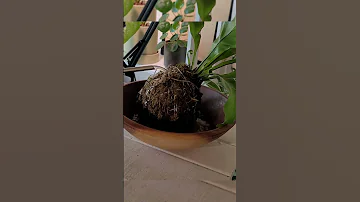Wie lange halten Kokedama?
How long do I soak my kokedama?
To water your Kokedama, follow these simple steps:
- Place your Kokedama in a bucket or bowl filled with water.
- Allow the moss ball to fully submerge and soak for 10-20 minutes, or until ball feels heavy.
- Remove from bucket and gently squeeze out excess water.
- Allow to drip dry before putting back on display.

How often do I water my kokedama?
Watering frequency will vary based on where the ball is located, but max amount would be 1-2 times per week.
How do you make kokedama step by step?
Out excess water until it holds together really well divide the ball into two halves with a simple twist. And place the plant between your two compost halves and reform. The ball around the plants aim
Which plant is best for kokedama?
A houseplant My favorite plants for kokedama are pothos, philodendron, peace lily, anthurium, dracaena, Norfolk Island pine, and ferns. You can make several kokedama in one session if you like. Potting mix Since the plant will be living in a constricted environment, it is necessary to have good aeration in your soil.
Can I use potting soil for kokedama?
Kokedama uses heavier soil and we recommend using a ratio of 70 percent indoor potting soil with 30 percent garden soil. In a bucket, mix soil well. Add a small amount of water to bond the soil together so it has a clay-like feel.
What can I use instead of sphagnum moss for kokedama?
Another option is to mix clay soil (85%) and peat moss (15%) together. The clay holds its shape and the peat moss provides the moisture retention for the plant. Experiment with both methods to see which one you like best, or according to the plant you use.
How do you bring a kokedama plant back to life?
We recommend soaking the kokedama for between 10-15mins. Longer is fine and will not hurt the plant, but can definitely impact the life of the moss and twine. Ensure all excess water is removed from the kokedama after soaking, by gently squeezing the moss ball.
What kind of moss do you use for kokedama?
sphagnum moss
(Sphagnum is the best moss for kokedama because it can hold 20 times its weight in water). Use the soil mixture to form a ball around your plant's roots. Wrap the root ball in a layer of sphagnum moss. Make sure it remains in a sheet to prevent the root ball from falling apart midair.
What is the purpose of kokedama?
Kokedama houseplants dissolve dangerous chemicals in the air such as benzene and transform carbon dioxide into life-giving oxygen. The Tranquil Plants range offers some of the best 'Fresh Air' plants available.
Do you need sphagnum moss for kokedama?
(Sphagnum is the best moss for kokedama because it can hold 20 times its weight in water). Use the soil mixture to form a ball around your plant's roots. Wrap the root ball in a layer of sphagnum moss. Make sure it remains in a sheet to prevent the root ball from falling apart midair.
Which moss is best for kokedama?
sphagnum moss
(Sphagnum is the best moss for kokedama because it can hold 20 times its weight in water). Use the soil mixture to form a ball around your plant's roots. Wrap the root ball in a layer of sphagnum moss. Make sure it remains in a sheet to prevent the root ball from falling apart midair.
How do you maintain kokedama?
Be sure to keep your kokedama well hydrated by misting daily, especially if you used live moss, which needs to be kept damp. Every so often, take down your kokedama and give it a good soak in a sink full of water, allowing it to drain before hanging.
How do you keep moss alive on kokedama?
For our green moss to stay fresh, it helps to give it a misting spray here and there, typically every 1-3 days. Misting requirements will depend on the humidity and airflow in your home. If the moss is constantly saturated it can turn brown, similarly, using unfiltered 'hardwater' can also turn your moss brown.
Do plants outgrow kokedama?
If your plant is cared for, then as with all happy, healthy, living and growing plants, it will eventually outgrow it's kokedama. Some plants like to be root bound in small spaces, and will live happily like this. This will likely restrict their growth, but the plant will live healthily for a time.


